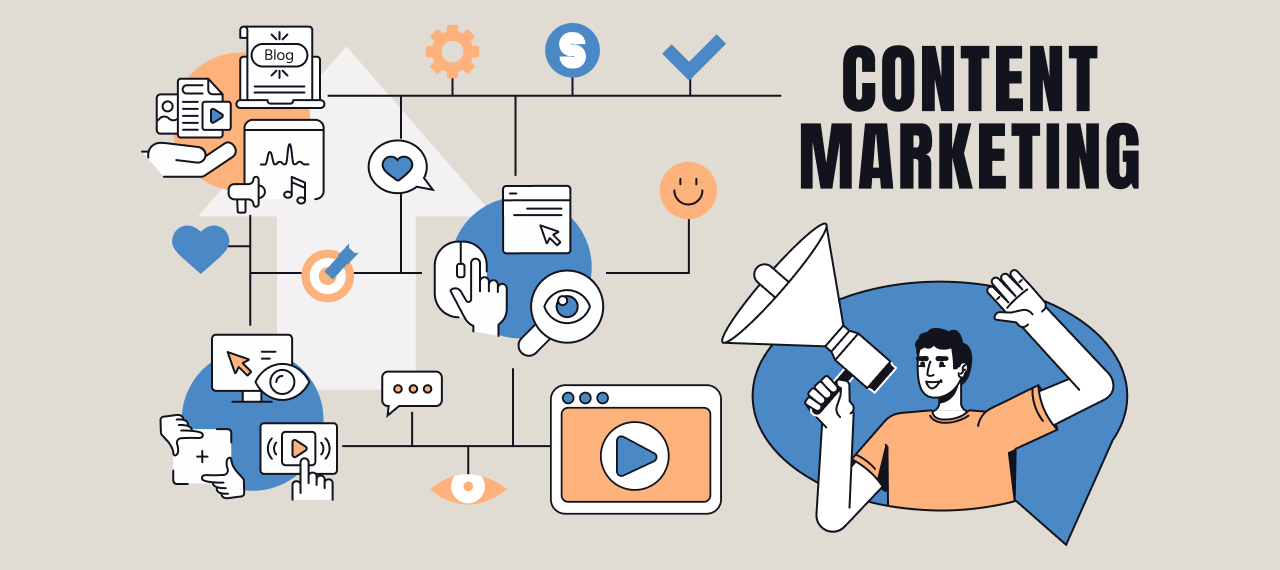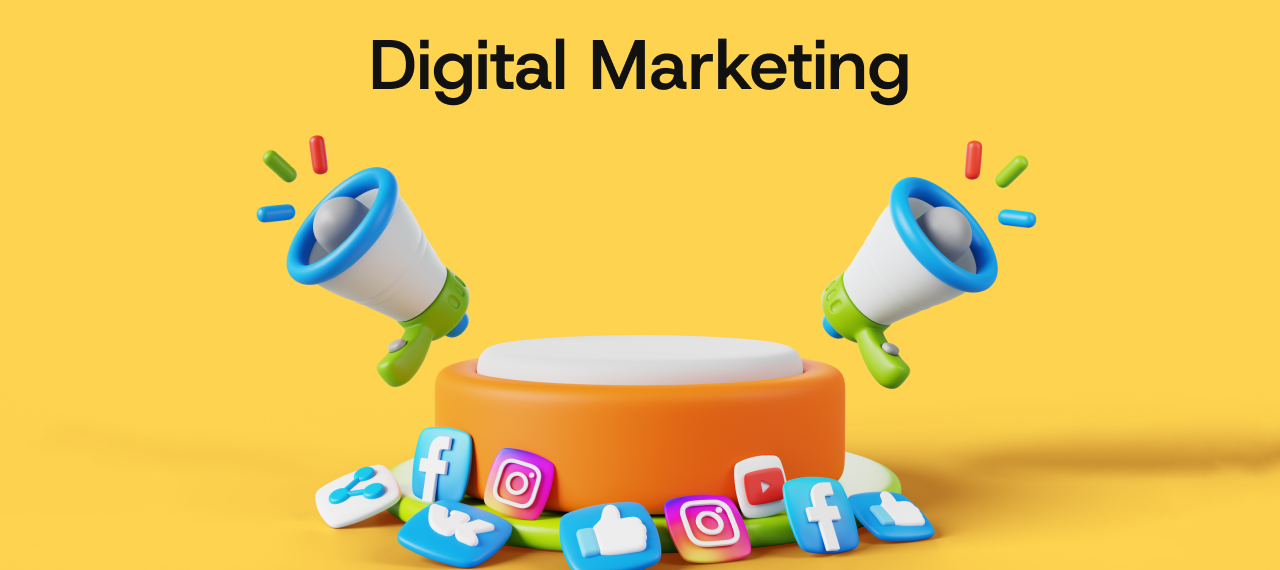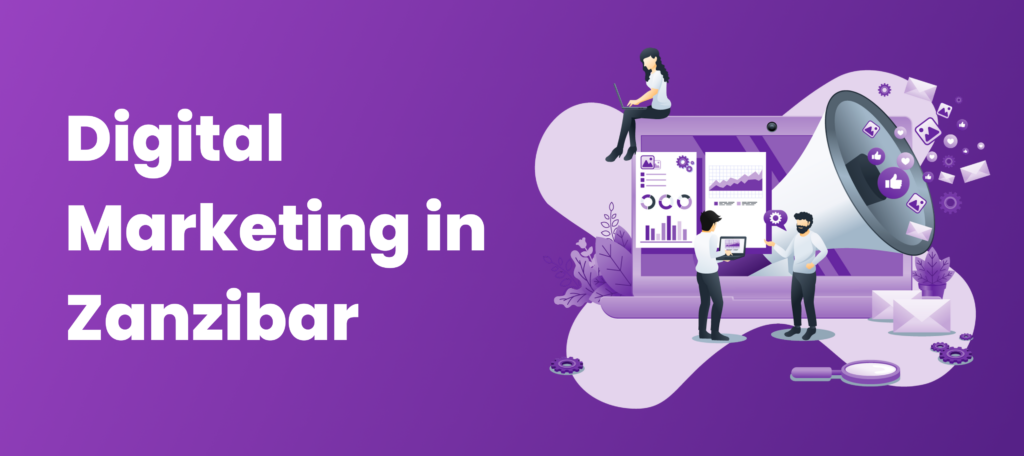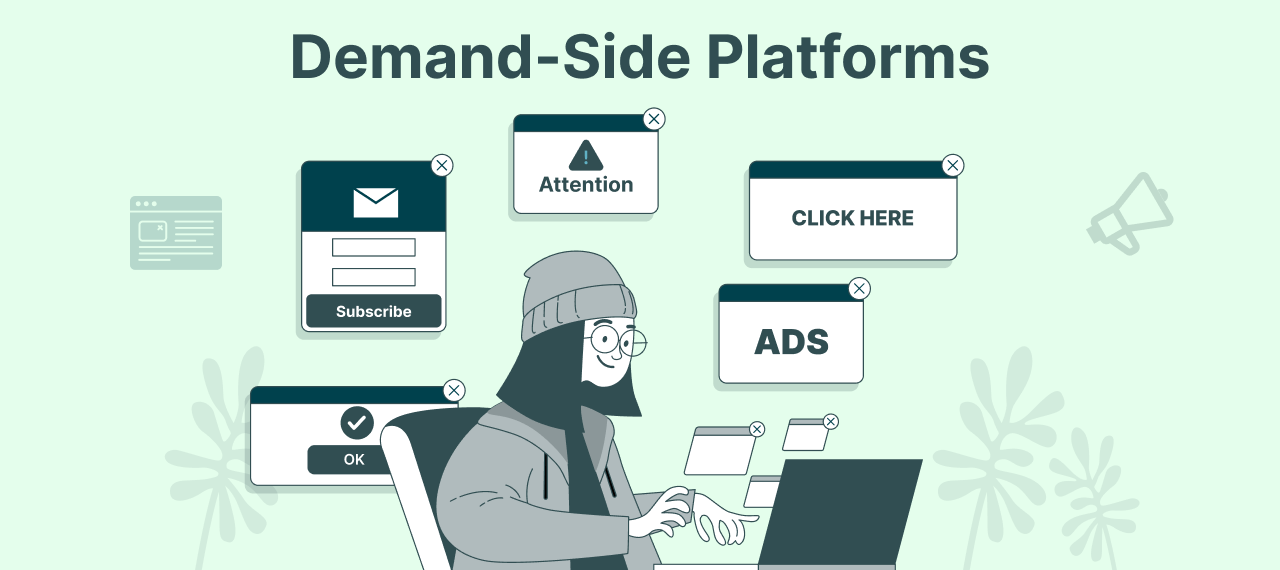Table of Contents
- What is Content Marketing
- Why Is Content Marketing Important
- Why Content Marketing Matters
- Top 7 Core Elements
- Types of Content
- Leverage Content Types for SEO Success
- Content Marketing Examples
- How Content Marketing Supports Sales
- Top 15 Content Marketing Benefits
- Final Thoughts
- Most Frequently Asked Questions
Architects often face unique challenges when it comes to marketing. It’s not just about showcasing your design skills-you also need to build trust and stand out in a crowded, competitive industry.
At EncodeDots, we understand how important it is to make a lasting impression. One of the smartest ways to connect with potential clients and highlight your expertise is by offering downloadable content.
Whether it’s a helpful checklist, a practical template, or a detailed guide, these resources provide real value to your audience. They also position your firm as a go-to expert in the field.
In this guide, EncodeDots will walk you through:
What is Content Marketing?
Content marketing is a strategy focused on creating and sharing valuable, relevant, and consistent content to attract, engage, and retain a specific audience. The goal is to drive profitable customer actions.
Instead of directly promoting products or services, content marketing educates, informs, or entertains your audience. It provides content that helps them solve problems, make informed decisions, or get inspired. This content can include articles, videos, podcasts, infographics, social media posts, whitepapers, and more.
At its core, content marketing is about storytelling and thought leadership. It’s about using meaningful content to build trust and credibility. When done right, it positions your brand as an industry leader and strengthens relationships with potential customers.
For businesses, especially in B2B, content marketing helps guide prospects through the buyer journey. By offering the right information at each stage, it makes the sales process smoother and more efficient. Well-informed prospects often “sell themselves” before ever talking to a sales rep.
A successful content marketing strategy relies on:
- A deep understanding of your target audience
- Creating content that addresses their needs or interests
- Using various content formats (written, visual, audio, etc.)
- Distributing that content across the right channels
- Measuring performance to optimize efforts
Why Is Content Marketing Important?
Content marketing is crucial in today’s digital world because it matches how modern consumers make purchasing decisions. Unlike traditional ads that interrupt and push messages, content marketing builds trust by providing valuable, relevant, and helpful information that addresses the real needs of your audience.
At its heart, content marketing is about engaging potential customers with meaningful content-not hard selling. Consumers are less receptive to direct advertising and prefer brands that educate, entertain, or offer real solutions before asking for a purchase. This shift is driven by digital platforms and social media, where information is easily accessible, and credibility is built through transparency and value.
Effective content marketing supports the audience at every stage of their journey-from awareness to decision-making. By consistently delivering relevant and authentic content that meets their needs, brands not only capture attention but also foster long-term relationships that lead to higher conversion rates and customer loyalty.
Why Content Marketing Matters
Today’s buyers, especially in the B2B and B2C space, are overwhelmed with ads and sales pitches. Instead of hard selling, content marketing focuses on building trust and credibility over time. When done right, it helps position your brand as a thought leader and a go-to resource in your industry.
Once that trust is built, prospects are more likely to engage with your business through product demos, case studies, testimonials, and more.
Top 7 Core Elements of Content Marketing
Content marketing is much more than just writing blogs or posting on social media. It’s a strategic discipline that combines storytelling, audience understanding, content planning, and performance measurement-all aimed at building trust, attracting the right audience, and driving profitable customer action. To succeed in content marketing, several core elements must work together cohesively. Let’s explore these foundational pillars in detail:
1. Valuable and Relevant Content
At the heart of any successful content marketing strategy lies content that delivers real value. Your audience should walk away from your content having learned something new, solved a problem, or felt entertained or inspired. Content must resonate with their goals, pain points, and interests.
This includes:
- Educational content (how-to guides, tutorials, whitepapers)
- Inspirational content (case studies, success stories)
- Entertaining content (quizzes, interactive videos)
- Practical content (templates, checklists, tools)
The goal is to create content that people want to consume and share because it helps them in a meaningful way-not just content that promotes your product or service.
2. Clearly Defined Target Audience
You cannot create impactful content without understanding who you’re creating it for. Defining your target audience is essential to ensure your messaging hits the mark. This involves identifying:
- Demographics (age, gender, income, education)
- Psychographics (values, interests, pain points, goals)
- Behavior patterns (buying habits, content consumption preferences)
Tools like buyer personas can help clarify your audience segments. Once you understand their motivations and challenges, you can create tailored content that speaks directly to their needs and builds stronger connections.
3. Strategic Content Planning
Content without strategy is just noise. A strategic plan ensures your content aligns with business goals, audience needs, and marketing funnels. This involves:
- Defining content goals (brand awareness, lead generation, engagement, conversions)
- Mapping content to the customer journey (awareness, consideration, decision)
- Conducting keyword research for SEO
- Creating a content calendar to manage consistency
Your content strategy should also account for repurposing-turning one long-form blog post into a video, a podcast episode, and social media snippets-to maximize reach and efficiency.
4. Consistent Publishing and Branding
Consistency builds credibility and trust. Your audience should know what to expect in terms of tone, voice, and schedule. Whether you publish daily, weekly, or monthly, staying consistent helps establish your brand as a reliable source of valuable information.
A consistent presence also ensures that:
- Your content stays top of mind
- You maintain SEO momentum
- You nurture leads throughout their journey
Consistency applies not just to frequency, but also to your branding-visuals, messaging style, and core brand values.
5. Multi-Channel Content Distribution
Creating great content is only half the equation. To maximize its impact, you need to ensure it reaches the right audience at the right time through the right channels.
Some popular distribution channels include:
- Search engines (via SEO)
- Social media platforms (organic + paid)
- Email newsletters
- Influencer partnerships
- Guest posts and PR sites
- Video platforms (YouTube, Vimeo, Reels)
A distribution strategy ensures that each piece of content has a plan for visibility. Paid promotion and influencer amplification can further expand reach.
6. Performance Tracking and Optimization
Content marketing is an ongoing process of testing and refining. By tracking KPIs (Key Performance Indicators) and metrics, you can measure what’s working and adjust what’s not. Common metrics include:
- Website traffic
- Bounce rate
- Time on page
- Social shares and engagement
- Conversion rates (downloads, sign-ups, purchases)
Tools like Google Analytics, social insights, and marketing automation platforms help gather performance data. This data is crucial for optimizing future content, tweaking CTAs, improving SEO, and better serving your audience.
7. SEO Integration
Search engine optimization (SEO) is an essential component of content marketing. Even the best content won’t drive organic traffic if it isn’t optimized to be discoverable. This includes:
- Keyword research and placement
- Meta titles and descriptions
- Internal linking
- Optimizing images and site speed
- Creating content that matches search intent
When SEO and content marketing are aligned, your content gains visibility in search results and becomes a long-term asset that continuously attracts leads.
8. Content Variety and Format Diversity
Different people prefer to consume content in different ways. Offering a mix of content formats can boost engagement and accommodate a broader audience. Common formats include:
- Blog posts and articles
- Infographics
- eBooks and whitepapers
- Videos and webinars
- Podcasts
- Social media graphics
Experimenting with different formats not only increases accessibility but also boosts shareability and brand exposure.
Types of Content You Can Create
Content marketing thrives on diversity. Different formats serve different purposes-from educating and informing to entertaining and converting. Below is an in-depth table outlining the most popular types of content marketing formats, complete with descriptions, use cases, and strategic benefits.
Content Marketing Formats – In-Depth Table
| Format | Description | Strategic Use Cases |
| Blogs | Long-form written articles that educate, inform, or entertain your audience. Ideal for SEO, they help attract organic traffic and build topical authority. | Organic traffic, SEO, thought leadership, educational marketing |
| Infographics | Visually engaging graphics that simplify complex data or processes. Highly shareable and great for increasing engagement and link-building. | Social media shares, backlinks, digestible data |
| Videos | Highly engaging multimedia content that includes explainers, tutorials, behind-the-scenes footage, and testimonials. Boosts retention and conversions. | YouTube, landing pages, ads, product education |
| Podcasts | Audio content usually in the form of interviews or topic-based episodes. Offers a convenient, hands-free way to consume information and builds deep audience loyalty. | Thought leadership, brand awareness, multitasking-friendly format |
| Whitepapers | Authoritative, detailed documents offering deep insight into a problem and its solution. Often used in B2B to demonstrate expertise and build trust. | Lead generation, B2B sales enablement, gated content |
| Printables | Downloadable resources like checklists, planners, or templates that provide instant, practical value to the user. | Lead magnets, user utility, email list building |
| Interactives | Tools such as quizzes, calculators, or surveys that allow users to engage directly with your content. | Engagement, personalization, data collection |
| Social Media Posts | Bite-sized content tailored for social platforms (Instagram, LinkedIn, X, etc.) often visual, witty, or topical in nature. | Community building, brand awareness, engagement |
| Case Studies | Real-world success stories showing how your product/service solved a specific problem. Adds credibility and assists in decision-making. | Sales enablement, trust-building, B2B proof of concept |
| Email Marketing | Personalized messages sent directly to a subscriber’s inbox. Can include promotions, newsletters, product updates, and educational series. | Lead nurturing, re-engagement, customer retention |
| eBooks | Longer, more in-depth downloadable guides offering high-value information in exchange for user data (emails). | Lead generation, authority building, funnel initiation |
| Webinars | Live or recorded video presentations offering value-driven insights. Allows for real-time engagement with potential leads. | Education, audience engagement, B2B sales |
| Online Courses | Multi-part educational programs, often video-based, providing step-by-step guidance on a topic. Enhances authority and user trust. | Brand authority, skill development, community building |
| Influencer Campaigns | Partnerships with individuals who have large or niche followings. Leverages their credibility to promote your brand or message. | Brand awareness, social proof, reach expansion |
| Memes and Humor | Light-hearted, funny content that spreads quickly and is highly shareable. Relatable humor can humanize a brand. | Viral engagement, brand relatability, Gen Z & Millennial targeting |
| Guides | Step-by-step instructions or how-tos that help your audience accomplish a specific goal. Often evergreen and useful for SEO. | SEO, customer onboarding, problem solving |
| Surveys | Content that asks the audience for opinions or preferences. Can be used to collect data, generate engagement, or create new content. | Research, user insight, engagement-driven content |
| Reviews & Testimonials | Customer-generated reviews that validate your product or service. Builds trust and encourages conversions. | Trust-building, conversion optimization, product credibility |
| Data Visualizations | Graphical representations of statistics or analytics data to tell a story quickly. Helpful in reports and research-based content. | Data storytelling, industry reports, shareable insights |
| Microcontent | Short-form snippets like quotes, tips, GIFs, or quick stats designed for rapid consumption, especially on social media. | Mobile engagement, frequent posting, quick user value |
Leveraging Different Types of Content for SEO Success
To effectively improve your SEO performance and meet the needs of a diverse audience, it’s essential to use a mix of content types. By incorporating a variety of SEO-friendly formats-such as blog posts, videos, infographics, and case studies-you can increase user engagement, reach a broader audience, and enhance your chances of ranking higher on search engine results pages (SERPs). Embracing this multi-format strategy helps ensure your content appeals to different user preferences while strengthening your online visibility.
Written Content
Written content is the backbone of most content marketing strategies. It’s searchable, great for SEO, and can educate, inform, and convert your audience when done right.
1. Blog Posts
Blog posts are one of the easiest and most effective ways to share valuable information. They can help answer your audience’s questions, share insights, and build trust over time.
Example:
“How to Choose the Right CRM Tool for Your Business” – a helpful guide that solves a specific problem for your readers.
2. Articles
Similar to blogs but often more formal or long-form, articles can be published on your website or on platforms like Medium or LinkedIn. They’re perfect for deep dives into topics your audience cares about.
Tip: Use articles to explain complex topics clearly and position your brand as a thought leader.
3. Ebooks
Ebooks are long-form content pieces that go in-depth on a particular subject. They’re often used as lead magnets-you offer the ebook in exchange for a visitor’s email address.
Example:
“Ultimate Guide to Social Media Marketing in 2025”
4. Case Studies
Case studies showcase how your product or service helped a real customer succeed. They are powerful tools for building trust and demonstrating real-world results.
Tip: Focus on the challenge, your solution, and the measurable outcome.
5. Newsletters
Email newsletters keep your audience engaged by delivering useful content straight to their inbox. You can share updates, curated resources, blog recaps, offers, or company news.
Visual Content
Visual content grabs attention and makes information easier to understand. It’s especially effective on social media, where users scroll quickly and react to images more than text.
1. Infographics
Infographics turn complex data or processes into easy-to-understand visuals. They’re great for simplifying topics and increasing shares on social media.
Example:
“A Visual Breakdown of the Buyer’s Journey”
2. Images
Custom graphics, branded photos, illustrations, and memes can all be part of your content strategy. Strong visuals help build brand identity and increase engagement.
Tip: Use high-quality visuals consistently across your platforms for a professional look.
3. Slides
Slides or slide decks (like those on SlideShare) are great for breaking down ideas into digestible parts. You can reuse content from a webinar, ebook, or blog post in a slideshow format.
4. Charts and Graphs
Visualizing data through charts makes your content more credible and easier to understand. It’s especially useful in reports, whitepapers, or blog posts with research.
Tip: Don’t overcomplicate it — keep visuals clean and focused.
Video Content
Video is the most engaging form of content. People love watching videos to learn something new, get inspired, or see a product in action. Plus, platforms like YouTube, TikTok, and Instagram prioritize video in their algorithms.
1. Explainer Videos
These are short videos that explain your product, service, or concept clearly and quickly. Perfect for landing pages or social ads.
Example:
“A 60-Second Tour of Our App – Here’s What You Can Do”
2. Tutorials
Step-by-step videos that show people how to solve a problem or use a tool. This builds credibility and positions your brand as helpful and knowledgeable.
Example:
“How to Set Up Google Analytics in 5 Minutes”
3. Behind-the-Scenes Videos
People love authenticity. Behind-the-scenes content gives your audience a glimpse into your company culture, team, or how you work.
Tip: Use this format to humanize your brand and build trust.
4. Product Demos
Showcase how your product works and how it helps solve a specific problem. Demos are perfect for people close to making a purchase.
Tip: Keep them clear, benefit-focused, and customer-centric.
Audio Content
Not everyone wants to read or watch. Audio content is booming, especially because it fits easily into people’s daily routines-like during commutes, workouts, or chores.
1. Podcasts
Podcasts let you dive deep into topics through interviews, discussions, or storytelling. They’re great for building an engaged audience over time.
Example:
“A Weekly Show on the Latest in Marketing Trends”
2. Interviews
Audio interviews with industry experts or customers provide valuable insights and can easily be turned into blog posts, quotes, and social content.
Tip: Record both audio and video versions to reuse across platforms.
3. Audio Guides
Think of these as mini-podcasts or how-to audio clips. They’re short and focused, perfect for delivering tips or quick learning sessions.
Example:
“3 Ways to Improve Your Landing Page Today (in 4 minutes)”
Content Marketing Examples: Real-World Strategies That Work
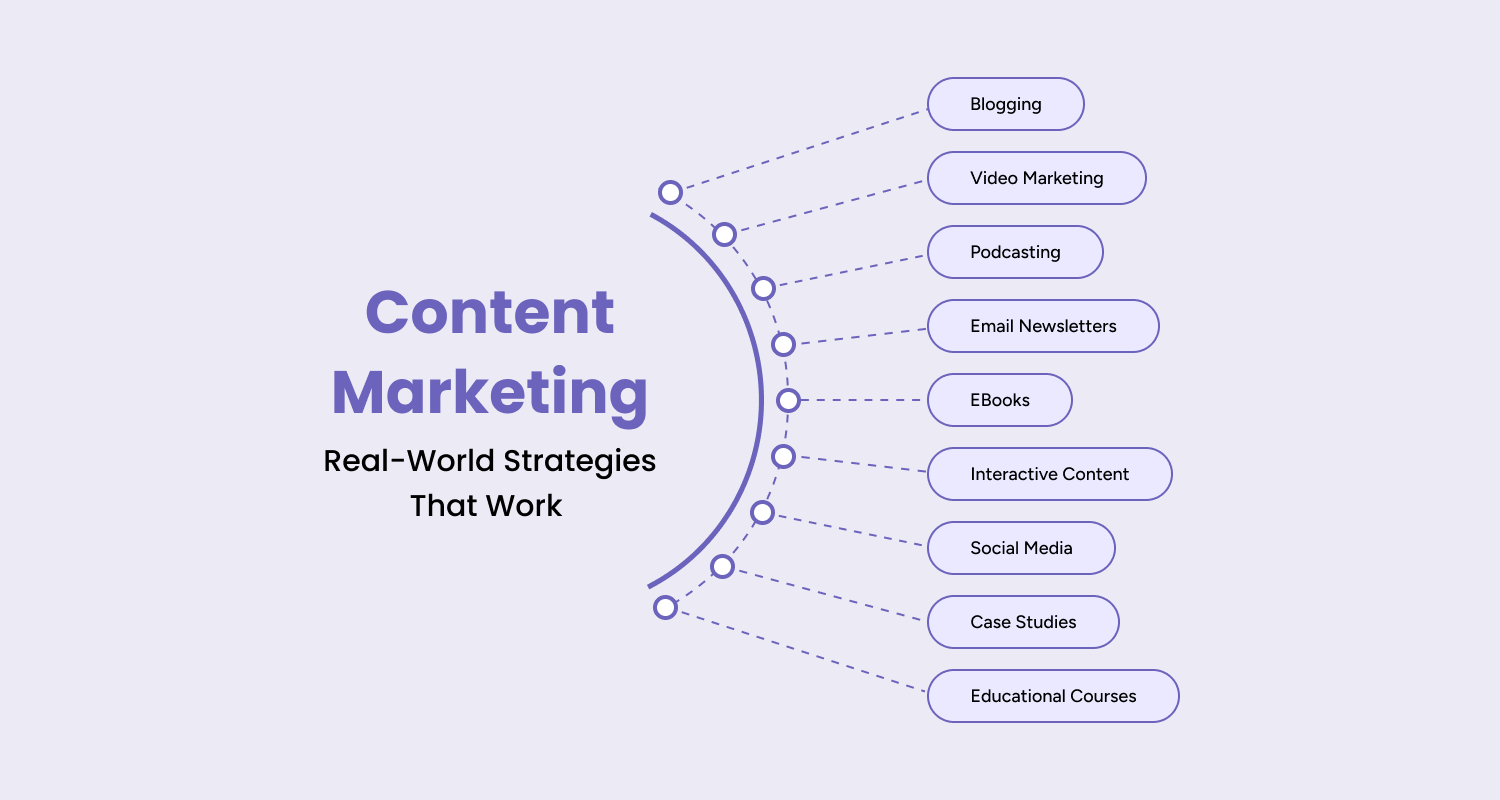
Content marketing is more than just writing blogs or posting on social media. It’s a strategic approach that leverages valuable content to attract, engage, and convert your target audience. From small businesses to global brands, companies across all industries are using content marketing to tell their stories, demonstrate value, and drive results.
Here are several detailed content marketing examples across different formats, industries, and goals that illustrate how effective this approach can be:
1. Blogging for SEO & Thought Leadership
Example: HubSpot
HubSpot is one of the best-known content marketing success stories. Their blog covers topics like marketing automation, sales tactics, and CRM tips, optimized for high-traffic keywords. They publish educational blog posts almost daily.
Why It Works:
- Attracts millions of monthly visitors through SEO.
- Establishes authority in inbound marketing.
- Converts readers into leads via downloadable resources and tool offers.
Takeaway: Publishing high-quality blog posts consistently can position your brand as a trusted resource in your niche.
2. Video Marketing to Showcase Personality and Product Use
Example: GoPro
GoPro uses user-generated video content to showcase how its cameras perform in real-life adventures-skydiving, snowboarding, underwater exploration, etc.
Why It Works:
- Builds a loyal, engaged community.
- Relies on authentic content, reducing the need for traditional advertising.
- Shows the product in action rather than just talking about it.
Takeaway: Encourage your customers to tell stories using your product or service. Real-world visuals are more relatable and trustworthy.
3. Podcasting for Audience Engagement
Example: Shopify’s “The Rebound” Podcast
Shopify created a podcast featuring stories of entrepreneurs who rebounded from failure. It shares behind-the-scenes insights into building eCommerce businesses.
Why It Works:
- Builds deeper connections with listeners.
- Establishes Shopify as a brand that supports and understands entrepreneurs.
- Drives awareness and loyalty through storytelling.
Takeaway: Podcasts can humanize your brand and turn passive listeners into loyal advocates.
4. Email Newsletters to Nurture and Educate
Example: Morning Brew
Morning Brew sends a daily business newsletter with a fun, witty tone that breaks down complex financial news into digestible formats for young professionals.
Why It Works:
- Consistent delivery (daily).
- Strong brand personality.
- High engagement and word-of-mouth growth.
Takeaway: Email marketing isn’t dead-when done right, it’s one of the best channels for audience retention and loyalty.
5. EBooks and Whitepapers for Lead Generation
Example: Salesforce
Salesforce publishes in-depth eBooks and whitepapers on topics like sales enablement, CRM integration, and data management. These resources are gated—users provide contact info to download them.
Why It Works:
- Educates potential buyers.
- Captures leads with high intent.
- Aligns content to stages of the buyer’s journey.
Takeaway: Offer premium, gated content to gather leads and showcase your expertise.
6. Interactive Content for Higher Engagement
Example: Buzzfeed Quizzes & HubSpot Calculators
Buzzfeed’s personality quizzes went viral, and B2B companies like HubSpot use tools like ROI calculators and website graders to engage users interactively.
Why It Works:
- Offers instant value.
- Encourages sharing and re-use.
- Collects user data for personalization.
Takeaway: Interactive content keeps users engaged and makes your brand more memorable.
7. Social Media Content to Stay Top-of-Mind
Example: Duolingo on TikTok
Duolingo’s TikTok strategy is famous for using its mascot in funny, trend-driven videos. The brand uses humor and pop culture to stay relevant and top-of-mind among Gen Z.
Why It Works:
- Builds emotional connection.
- Goes viral with shareable, relatable content.
- Converts entertainment into product awareness.
Takeaway: A consistent, creative social media presence can dramatically increase visibility—even for “serious” brands.
8. Case Studies to Build Trust
Example: Adobe Customer Success Stories
Adobe shares case studies of how major brands use its tools to improve design and productivity. These are detailed narratives with visual support and quantifiable results.
Why It Works:
- Provides social proof.
- Helps prospects visualize success.
- Reinforces Adobe’s value proposition.
Takeaway: Use real customer stories to build trust and help prospects feel confident in choosing you.
9. Educational Courses to Attract and Retain Customers
Example: Ahrefs Academy
Ahrefs offers free SEO courses that not only teach the basics of SEO but also demonstrate how to use their tool effectively.
Why It Works:
- Educates and empowers customers.
- Reduces churn by showing tool value.
- Attracts new users organically through helpful content.
Takeaway: Offering free education builds trust and drives long-term loyalty.
How Content Marketing Supports Sales
Content marketing doesn’t replace your sales team-it empowers them. By the time a lead interacts with sales, they’ve likely consumed several pieces of content and are more informed. This shifts the sales rep’s role from convincing to consulting-helping the customer find the right solution for their needs.
Read More: ROAS Marketing for Agencies: How to Show Clients Real Value
Top 15 Content Marketing Benefits For Your Business
Content marketing is no longer a buzzword-it’s an essential component of modern marketing strategies. Whether you’re a small startup or an established enterprise, content marketing offers tangible benefits that can drive your business forward. Let’s dive deep into the major advantages of content marketing for your business and why investing in it can yield substantial long-term results.
1. Improved SEO
Search engine optimization (SEO) is critical for online visibility. Content marketing directly supports SEO by providing search engines with fresh, keyword-rich, and relevant content. Regularly publishing blogs, articles, and guides helps you rank higher in search results. With each new piece of content, you create another opportunity for your business to be found online.
2. Increased Organic Traffic
When your content is optimized for search engines and answers user questions, your website becomes a magnet for organic (non-paid) traffic. Instead of relying heavily on ads, content marketing brings in visitors consistently over time. Evergreen content-like how-to guides or industry explainers-can continue attracting new visitors for months or even years.
3. Better Lead Generation
Content marketing attracts potential customers in the early stages of the buyer’s journey. Offering valuable resources like eBooks, whitepapers, and webinars encourages users to exchange their contact details. This means more qualified leads entering your funnel, without aggressive sales tactics.
4. Passive Sales Funnel Growth
Once published, your content works for you 24/7. A well-crafted article or downloadable asset can continuously attract leads, nurture them, and move them through your sales funnel-even while you sleep. Content acts like a passive salesperson, always available to answer questions, educate, and build trust.
5. Trust and Credibility
Creating helpful, non-promotional content positions your brand as a trustworthy source of information. When people find real value in your articles, videos, or podcasts, they are more likely to trust your business. Trust is one of the most important currencies in digital marketing and content is the way to earn it.
6. Brand Authority
Publishing in-depth, well-researched content in your niche helps you become a thought leader. When you provide answers, industry insights, or expert commentary, people begin to see your brand as an authority. This increases your influence in the market and can lead to media mentions, partnerships, and more.
7. Competitive Advantage
Many competitors may still rely on traditional sales methods. A strong content strategy gives you a competitive edge by reaching potential customers earlier in their decision-making process. If you’re the brand educating the market, you’ll be the brand they trust when it’s time to buy.
8. Improved Customer Relationships
Content doesn’t stop after a sale. Useful resources like tutorials, how-to articles, and customer support blogs help keep your clients happy. When you consistently add value post-sale, you build stronger, longer-lasting customer relationships-and reduce churn.
9. More Brand Awareness
The more content you publish and distribute across various platforms, the more opportunities people have to discover your brand. From Google searches to social media shares, content increases the number of brand touchpoints. Over time, this boosts awareness and recognition.
10. Larger Social Media Presence
Quality content gives you something valuable to share on social platforms. It encourages engagement, sharing, and interaction-all of which help you grow your social media following. Engaging content also increases the chances of going viral or being referenced by influencers in your space.
11. Support for the Entire Sales Funnel
Content marketing supports every stage of the buyer journey:
- Top of Funnel (Awareness): Blog posts, infographics, and videos attract visitors.
- Middle of Funnel (Consideration): Case studies, comparison guides, and webinars educate and build trust.
- Bottom of Funnel (Decision): Testimonials, free trials, and demos help convert.
A solid content plan ensures you’re providing the right information at the right time.
12. Higher Brand Loyalty
When people consistently gain value from your content, they are more likely to become loyal customers and brand advocates. Loyalty stems from trust and continued engagement. Brands that consistently educate and entertain their audience enjoy higher customer retention.
13. Improved Conversion Rates
Content that educates, addresses pain points, and overcomes objections naturally boosts conversions. Visitors who are informed and nurtured with the right content are far more likely to take the next step-whether it’s signing up, purchasing, or reaching out.
14. Cost-Effectiveness
Compared to traditional advertising, content marketing is significantly more affordable-and its impact lasts longer. While ads stop generating results once the budget runs out, content remains online, generating leads for months or years. It’s a high-ROI strategy, especially for small and mid-size businesses.
15. Educated Buyers
Content marketing helps consumers make informed decisions. The more your customers understand your product, industry, and the problems you solve, the more confident they will be in choosing your business. Educated buyers also have fewer objections, which makes the sales process quicker and easier.
Final Thoughts: Content Marketing
At its core, content marketing is storytelling with purpose. It’s about delivering real value to your audience-not just selling to them. When you educate, inform, or entertain your customers, you build trust, and trust leads to loyalty-and ultimately, more business.
Whether you’re writing a blog post, recording a video, or creating an infographic, content marketing is about helping people solve problems or learn something new.
If you want to be at the forefront of content marketing, consider joining the EncodeDots team, a place where marketers grow, collaborate, and innovate.







